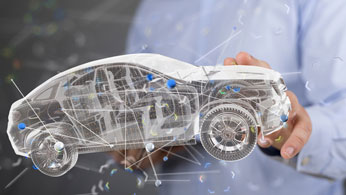(X)IIR
Butyl rubber (IIR) is a synthetic rubber, a copolymer of isobutylene with isoprene. Providing excellent air retention, it is widely used for tire inner liners among other applications.
ARLANXEO’s X_Butyl® product family contains a broad range of regular butyl rubber (IIR), chlorobutyl rubber (CIIR) and bromobutyl rubber (BIIR) products.
Its wide-ranging applications include tire inner liners, medical and pharmaceutical stoppers, chewing gum, adhesives, sealants, vehicle body mounts, acid-resistant tank linings, and reservoir membranes.

X_Butyl® offers the following benefits:
- Low permeability to gas and moisture
- High damping of low frequency vibrations
- Good ageing, heat and ozone resistance
- Resistance to acids, bases and other chemicals
- Good low temperature performance
- A low level of impurities
X_Butyl® is ARLANXEO's butyl rubber brand commercialized to support industrial partners with premium butyl products.
Tires
The inner liner is an essential component of tubeless tires whose demand continues to rise. Using a halobutyl rubber-based inner liner helps the tire to maintain proper inflation pressure in order to provide lower rolling resistance and fuel economy compared to conditions where it is under inflated. Furthermore, the tire needs the correct pressure to ensure that the tire performs well and operates under safe conditions. The only vehicle safety component that actually touches the road is the tire, and the halobutyl inner liner ensures that the tire operates as designed at the proper inflation pressure.
ARLANXEO brominated and chlorinated X_Butyl® polymers are well-suited for the production of a highly effective inner liner layer.
While ARLANXEO's butyl rubber products find their primary applications in the tire industry, their versatile properties also make them attractive for a wider spectrum of technical rubber applications such as medical stoppers, adhesives and sealants, chewing gum, hoses, seals and membranes.
Medical stoppers and plungers
ARLANXEO X_Butyl® bromobutyl and chlorobutyl grades are used in many medical and pharmaceutical applications due to its low permeability, polymer purity, clean cure systems and good ageing characteristics. The healthcare industry must comply with stringent requirements for the protection of sterile pharmaceutical products against external contamination during storage and use. As such, halobutyl rubber is commonly used for stoppers used in infusion containers, injection vials, and blood collection tubes as well as plungers in pre-filled syringes.
Chewing gum
ARLANXEO X_Butyl® RB 101-3 is a specialty product manufactured for the chewing gum industry. In particular, regular butyl rubber is used in the gum base, which is an important starting point for a wide variety of different finished gum products. Butyl’s trademark stability and resistance to ageing helps the gum retain its soft texture during storage.
Other non-tire applications
Ageing resistance and low permeability also makes butyl rubber ideal for a variety of adhesive and sealing applications. Our butyl products are used in adhesive formulations for transparent tapes, hot melt pressure sensitive adhesives, mastic for pipe wrap tapes, as well as flooring and roofing adhesives.
Do you need further information about our products and their applications or regulatory declarations? You can also use the contact form for any questions about career opportunities at ARLANXEO, media enquiries and other topics.
Get in touchButyl rubber (IIR) is a synthetic rubber, a copolymer of isobutylene with isoprene. Providing excellent air retention, it is widely used for tire inner liners among other applications.
Halobutyl rubber of the X_Butyl® brand from ARLANXEO protects pharmaceutical products from external influences such as moisture, light and ozone, heat and cold.
Specialty rubbers used in the automotive industry and formulated to maximize the performance of tires can go a long way toward helping reduce CO2 emissions.